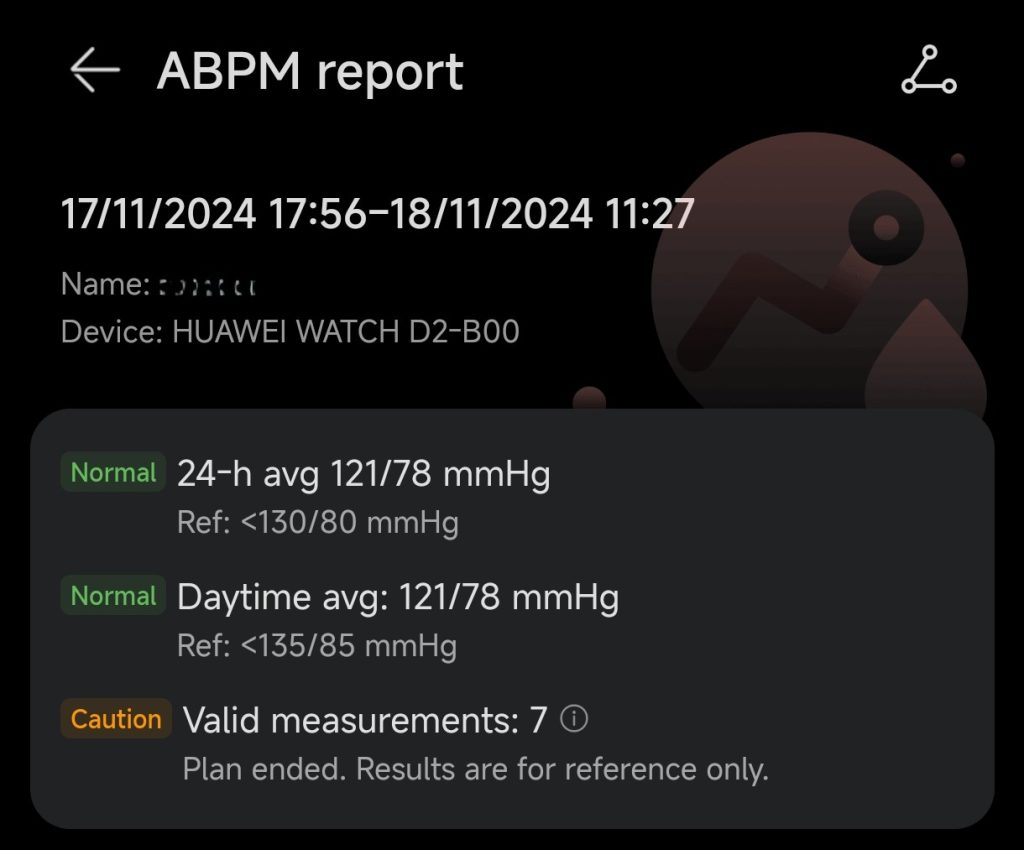
Huawei Watch D2 Ambulatory Blood Pressure Monitoring: Life Saving or Gimmick?

The world of wearable tech keeps expanding, merging the lines between convenience and medical monitoring. Among the latest innovation is how the Huawei Watch D2 boasts a feature called Ambulatory Blood Pressure Monitoring (ABPM), capable of taking user’s blood pressure readings at hourly intervals throughout the day.
ABPM’s guideline is first released back in 2008, it expended the possibility to understand a person’s health through patterns of blood pressure. For us that are not from the field, we may not understand what real benefits does this offer, and how it will change life. Let’s delve into the science behind ABPM and explore how this data can be valuable for both you and your healthcare professional.
What is Ambulatory Blood Pressure Monitoring (ABPM)?

Unlike traditional arm cuffs, ABPM involves wearing a cuff on your wrist that inflates automatically at preset intervals over a 24-hour period. This provides a more comprehensive picture of your blood pressure fluctuations throughout the day, as opposed to a single snapshot reading you might get for a measurer.
What Kind of Data Does ABPM With the Huawei Watch D2 Provide?
Huawei Watch D2 with ABPM offers a range of data points, including:

- 24 Hours Blood Pressure: This presents the overall average of your systolic (upper) and diastolic (lower) blood pressure readings throughout the day, night, and the entire 24-hour period.
- Blood Pressure Trends: You’ll be able to visualize how your blood pressure fluctuates over time, helping identify patterns like dips during sleep or spikes during activity.
- Daytime vs. Nighttime Blood Pressure: ABPM differentiates between daytime and nighttime readings, which can be crucial for diagnosing conditions like “masked hypertension” where blood pressure appears normal during the day but elevates at night.

Why is ABPM Important?
There are several reasons why ABPM can be:
- Early Detection of Hypertension: Hypertension, often dubbed the “silent killer,” can go undetected for years without causing symptoms. ABPM can reveal subtle blood pressure fluctuations that might be missed in a single doctor’s visit, potentially leading to early diagnosis and treatment.
- Improved Treatment Management: For individuals already diagnosed with hypertension, ABPM data can help doctors evaluate the effectiveness of medication and make adjustments as needed. By observing blood pressure trends, doctors can determine if medication is sufficiently controlling blood pressure throughout the day and night.
- Identifying Underlying Conditions: Blood pressure patterns can shed light on potential underlying issues. For example, significant nighttime blood pressure dips might indicate sleep apnea, while consistently high readings throughout the day could suggest stress or anxiety.
- Personalized Treatment Approach: Armed with a more comprehensive picture of your blood pressure, healthcare professionals can develop a personalized treatment plan tailored to your specific needs and risk factors. This could involve lifestyle modifications, medication adjustments, or further investigation into potential causes.
How Can This Data Help Medical Professionals Treat You?

The data gathered from hourly blood pressure monitoring provides a wealth of information that can be used by medical professional to:

- Confirm a Hypertension Diagnosis: ABPM data can be used to confirm a diagnosis of hypertension if single clinic readings are consistently elevated.
- Differentiate Between Types of Hypertension: ABPM helps distinguish between white-coat hypertension (elevated readings only at the doctor’s office) and masked hypertension (normal readings at the doctor’s office but elevated at home).
- Optimize Medication Dosing: By observing how your blood pressure responds to medication throughout the day, doctors can adjust the dosage or timing of medications to ensure optimal control.
- Monitor for Side Effects: Some medications can cause fluctuations in blood pressure. ABPM data can help doctors identify potential medication side effects and adjust treatment accordingly.
- Track Progress Over Time: With consistent ABPM use, doctors can monitor the effectiveness of your treatment plan and make necessary adjustments over time.

Is Huawei Watch D2 ABPM Right for You?
While ABPM offers many advantages, it’s important to gauge within your own needs and health to determine if it’s suitable for you. Here are some considerations:

- Existing Health Conditions: ABPM might be particularly beneficial for individuals with pre-existing conditions like high blood pressure, diabetes, or heart disease.
- Lifestyle Factors: If you’re managing risk factors for hypertension like stress, weight, or activity levels, ABPM can provide valuable insights into their impact on your blood pressure.
- Accuracy Concerns: While the Huawei Watch D2 is clinically validated in certain country including Malaysia, it’s crucial to understand that wrist-based blood pressure monitoring might not be as accurate as traditional arm cuffs. Doctors might recommend confirmation with a clinic-based measurement.
Further reading
The For those who want to know more about Huawei Watch D2 being a MDA-Approved medical devices and why is it important, check out our dedicated article above.
For the full review of the Huawei Watch D2, check out our comprehensive review above.











